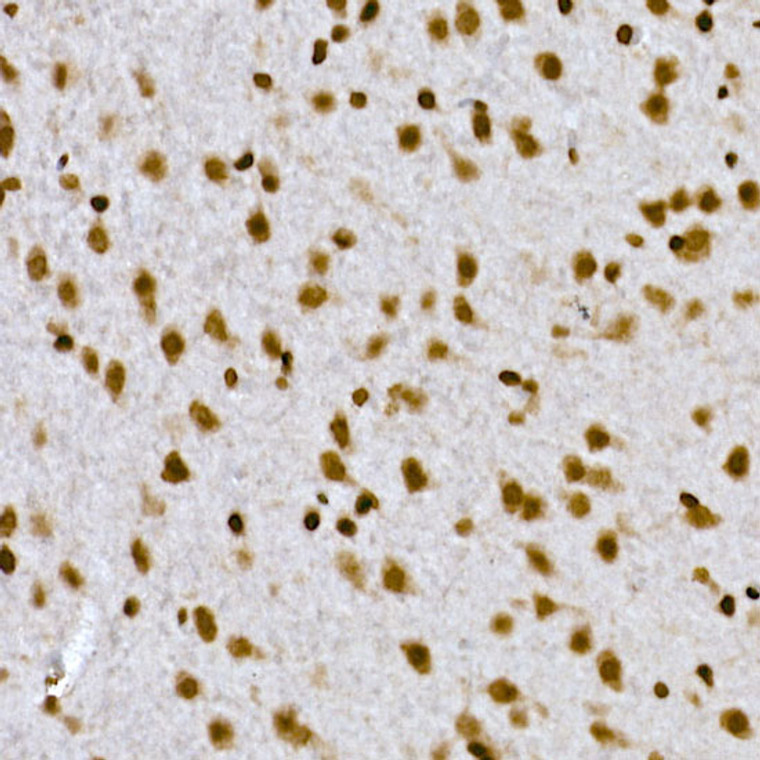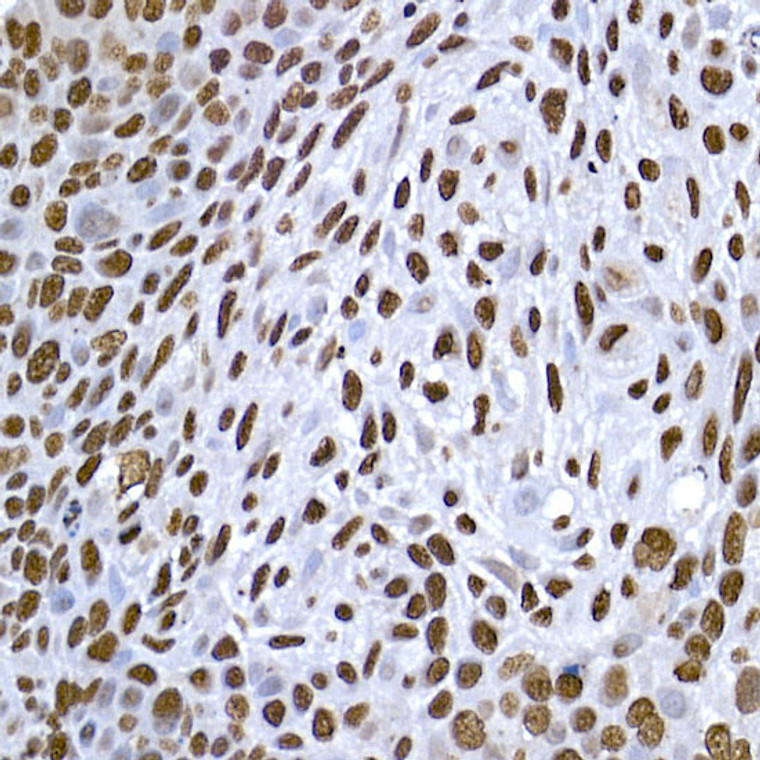| Host: |
Rabbit |
| Applications: |
WB/IHC/IF |
| Reactivity: |
Human/Mouse/Rat |
| Note: |
STRICTLY FOR FURTHER SCIENTIFIC RESEARCH USE ONLY (RUO). MUST NOT TO BE USED IN DIAGNOSTIC OR THERAPEUTIC APPLICATIONS. |
| Short Description: |
Rabbit polyclonal antibody anti-Histone H1.2 (100-200) is suitable for use in Western Blot, Immunohistochemistry and Immunofluorescence research applications. |
| Clonality: |
Polyclonal |
| Conjugation: |
Unconjugated |
| Isotype: |
IgG |
| Formulation: |
PBS with 0.05% Proclin300, 50% Glycerol, pH7.3. |
| Purification: |
Affinity purification |
| Dilution Range: |
WB 1:500-1:2000IHC-P 1:50-1:200IF/ICC 1:50-1:200 |
| Storage Instruction: |
Store at-20°C for up to 1 year from the date of receipt, and avoid repeat freeze-thaw cycles. |
| Gene Symbol: |
H1-2 |
| Gene ID: |
3006 |
| Uniprot ID: |
H12_HUMAN |
| Immunogen Region: |
100-200 |
| Immunogen: |
A synthetic peptide corresponding to a sequence within amino acids 100-200 of human HIST1H1C (NP_005310.1). |
| Immunogen Sequence: |
GASGSFKLNKKAASGEAKPK VKKAGGTKPKKPVGAAKKPK KAAGGATPKKSAKKTPKKAK KPAAATVTKKVAKSPKKAKV AKPKKAAKSAAKAVKPKAAK P |
| Post Translational Modifications | H1 histones are progressively phosphorylated during the cell cycle, becoming maximally phosphorylated during late G2 phase and M phase, and being dephosphorylated sharply thereafter. Crotonylation (Kcr) is specifically present in male germ cells and marks testis-specific genes in post-meiotic cells, including X-linked genes that escape sex chromosome inactivation in haploid cells. Crotonylation marks active promoters and enhancers and confers resistance to transcriptional repressors. It is also associated with post-meiotically activated genes on autosomes. Citrullination at Arg-54 (H1R54ci) by PADI4 takes place within the DNA-binding site of H1 and results in its displacement from chromatin and global chromatin decondensation, thereby promoting pluripotency and stem cell maintenance. ADP-ribosylated on Ser-188 in response to DNA damage. |
| Function | Histone H1 protein binds to linker DNA between nucleosomes forming the macromolecular structure known as the chromatin fiber. Histones H1 are necessary for the condensation of nucleosome chains into higher-order structured fibers. Acts also as a regulator of individual gene transcription through chromatin remodeling, nucleosome spacing and DNA methylation. |
| Protein Name | Histone H1.2Histone H1cHistone H1dHistone H1s-1 |
| Database Links | Reactome: R-HSA-140342Reactome: R-HSA-2559584 |
| Cellular Localisation | NucleusChromosomeMainly Localizes In EuchromatinDistribution Goes In Parallel With Dna Concentration |
| Alternative Antibody Names | Anti-Histone H1.2 antibodyAnti-Histone H1c antibodyAnti-Histone H1d antibodyAnti-Histone H1s-1 antibodyAnti-H1-2 antibodyAnti-H1F2 antibodyAnti-HIST1H1C antibody |
Information sourced from Uniprot.org
12 months for antibodies. 6 months for ELISA Kits. Please see website T&Cs for further guidance









![Western blot analysis of lysates from wild type (WT) and RAB11A knockout (KO) HeLa cells, using [KO Validated] RAB11A Rabbit polyclonal antibody (STJ11100021) at 1:1000 dilution. Secondary antibody: HRP Goat Anti-Rabbit IgG (H+L) (STJS000856) at 1:10000 dilution. Lysates/proteins: 25 Mu g per lane. Blocking buffer: 3% nonfat dry milk in TBST. Detection: ECL Basic Kit. Exposure time: 30s. Western blot analysis of lysates from wild type (WT) and RAB11A knockout (KO) HeLa cells, using [KO Validated] RAB11A Rabbit polyclonal antibody (STJ11100021) at 1:1000 dilution. Secondary antibody: HRP Goat Anti-Rabbit IgG (H+L) (STJS000856) at 1:10000 dilution. Lysates/proteins: 25 Mu g per lane. Blocking buffer: 3% nonfat dry milk in TBST. Detection: ECL Basic Kit. Exposure time: 30s.](https://cdn11.bigcommerce.com/s-zso2xnchw9/images/stencil/300x300/products/89093/357552/STJ11100021_1__40898.1713121674.jpg?c=1)